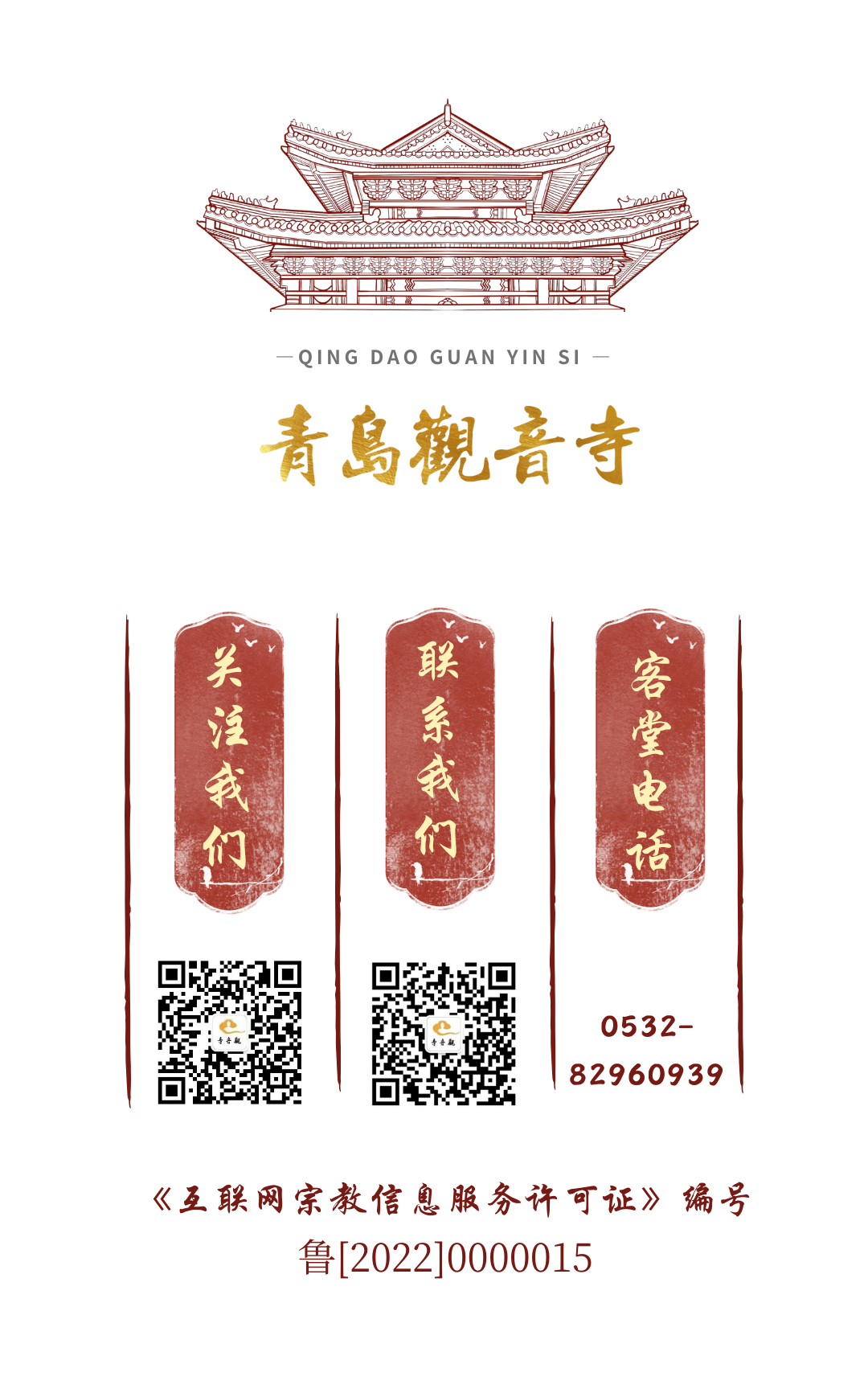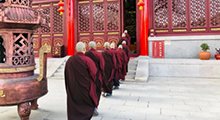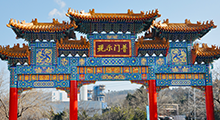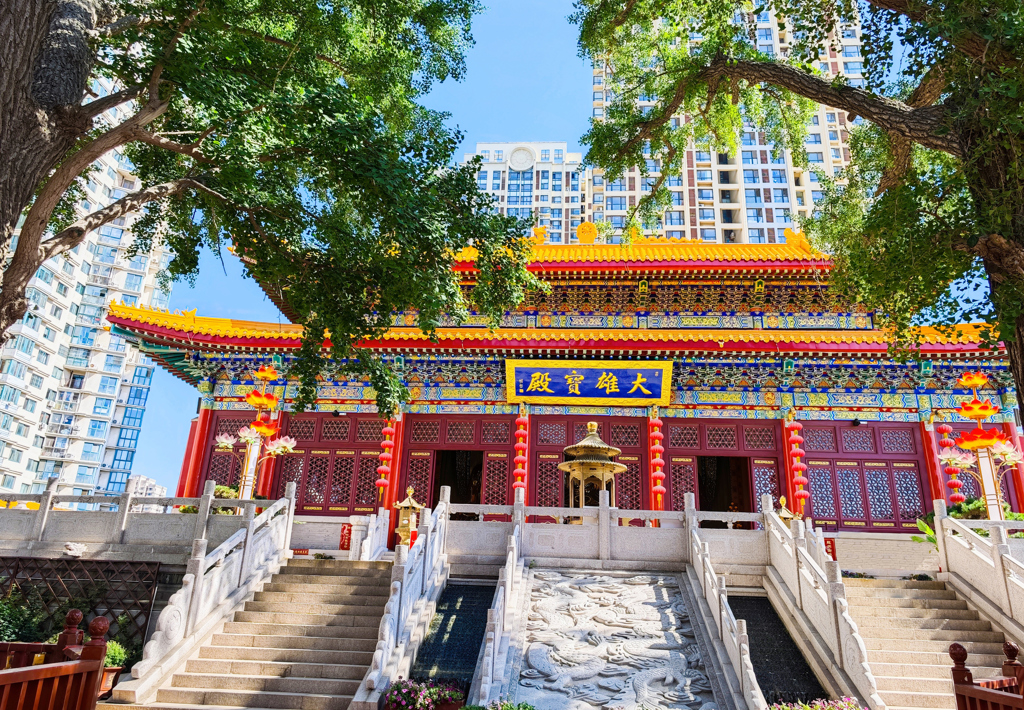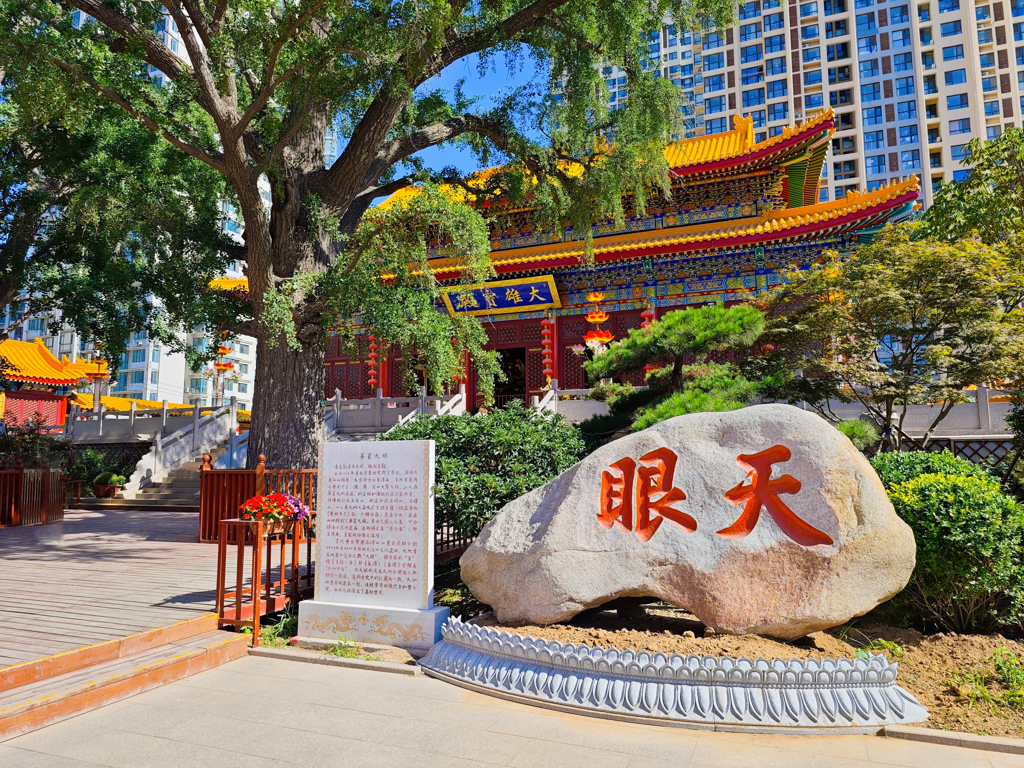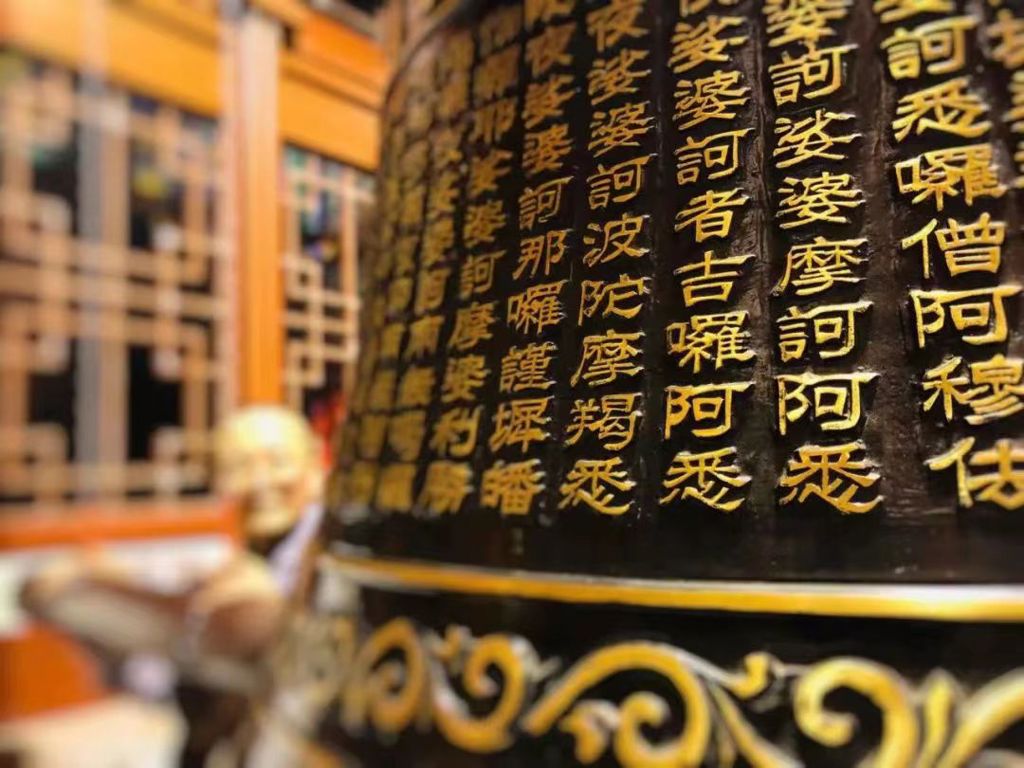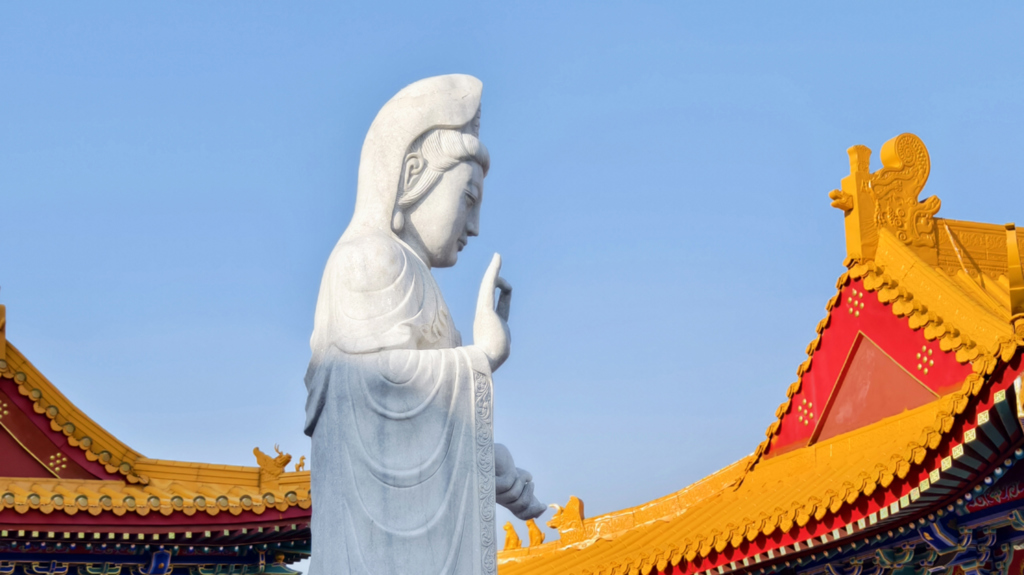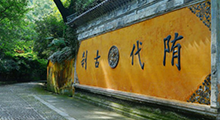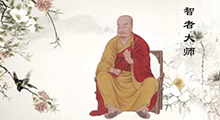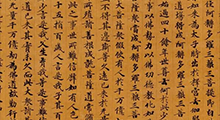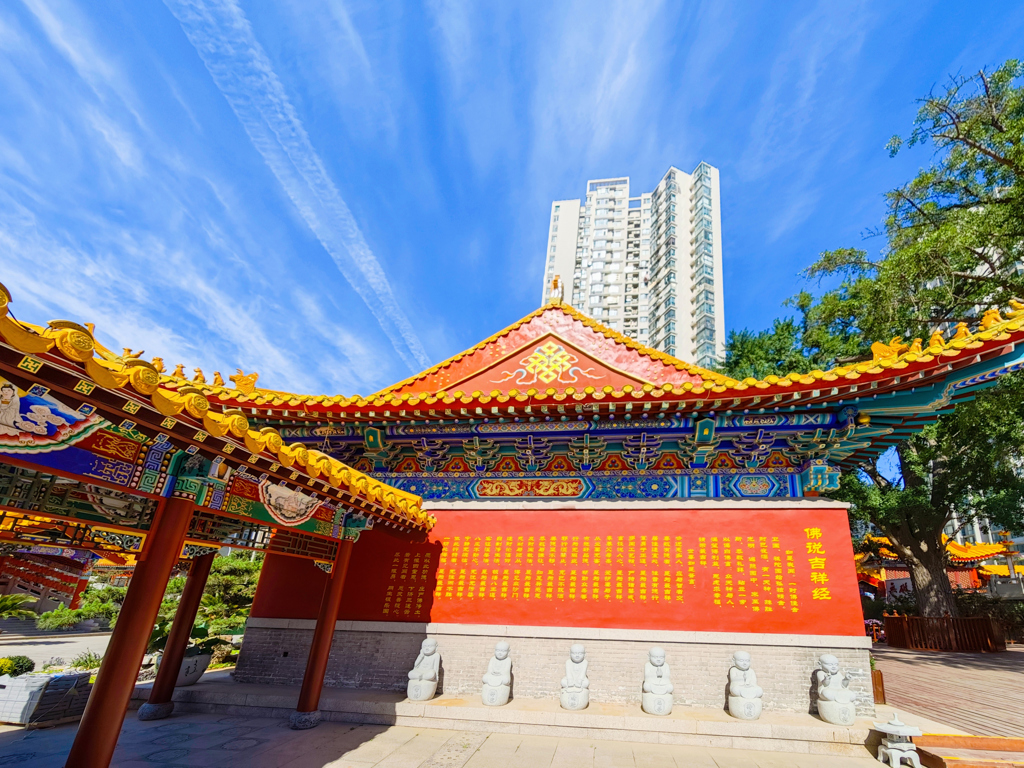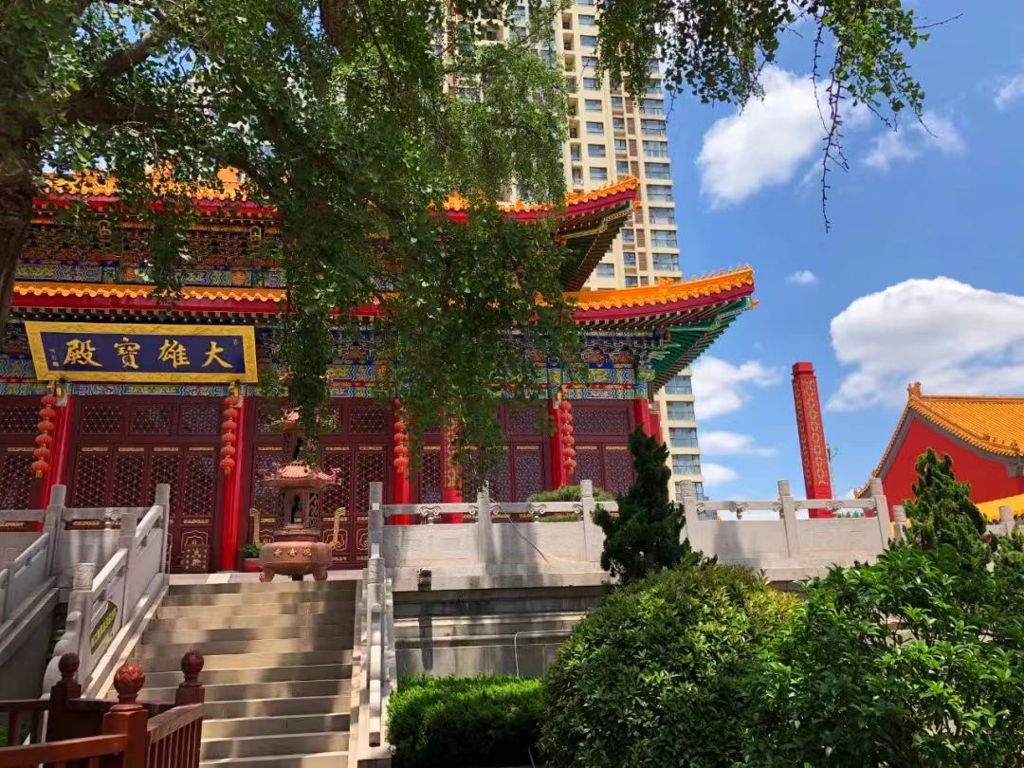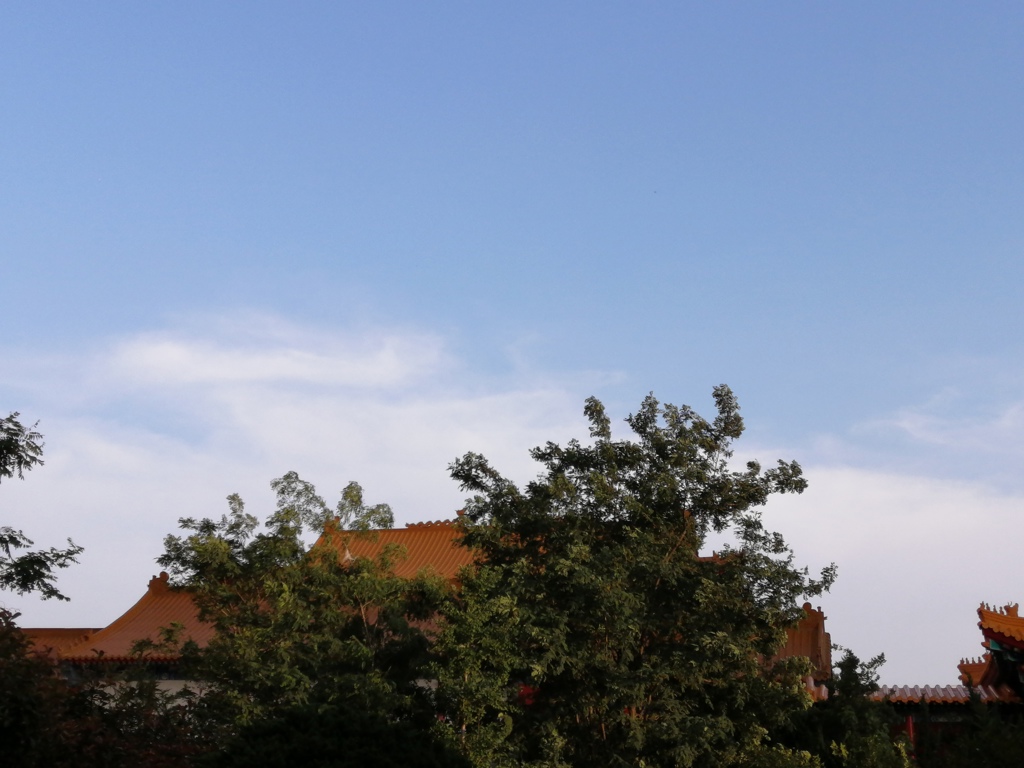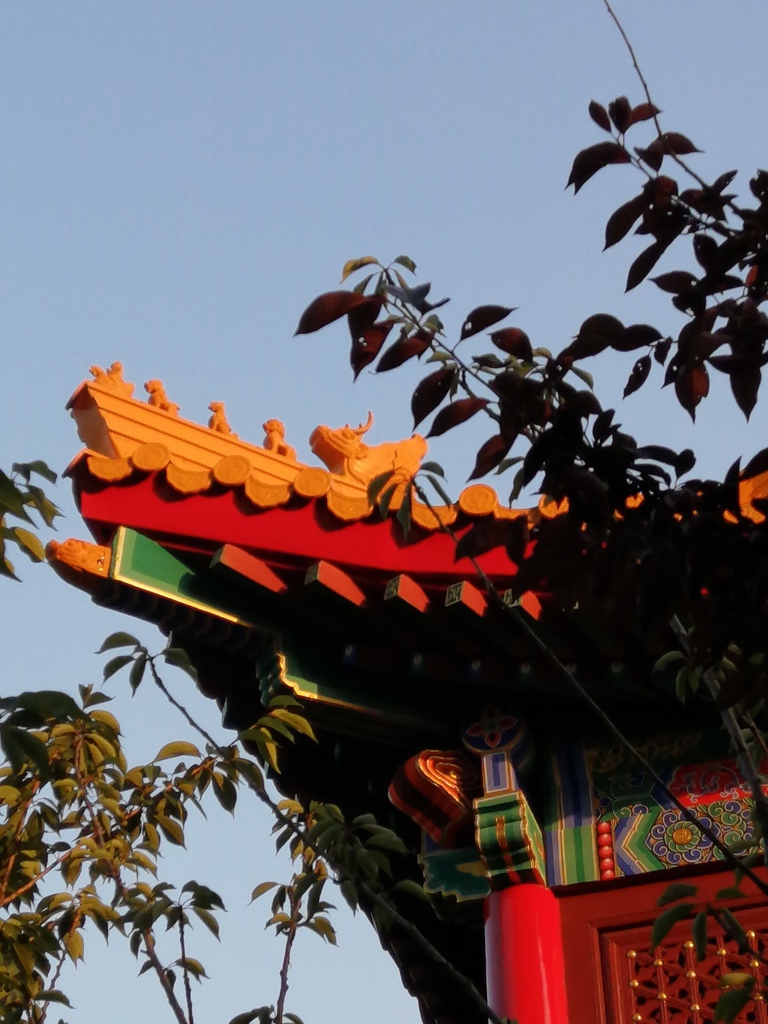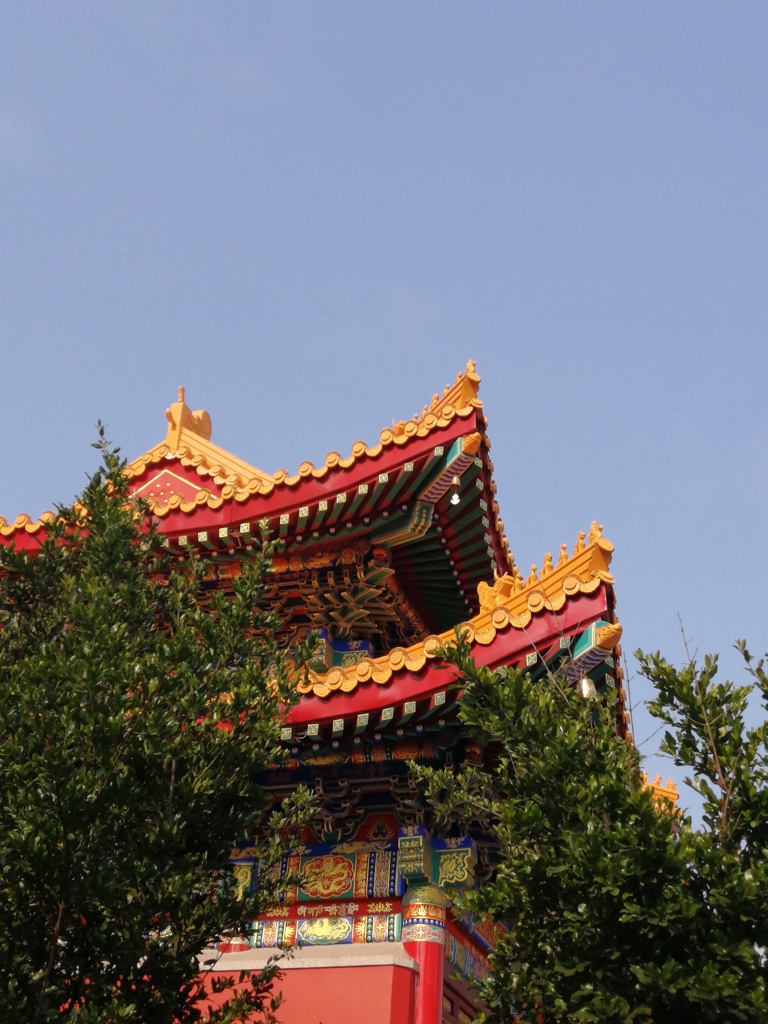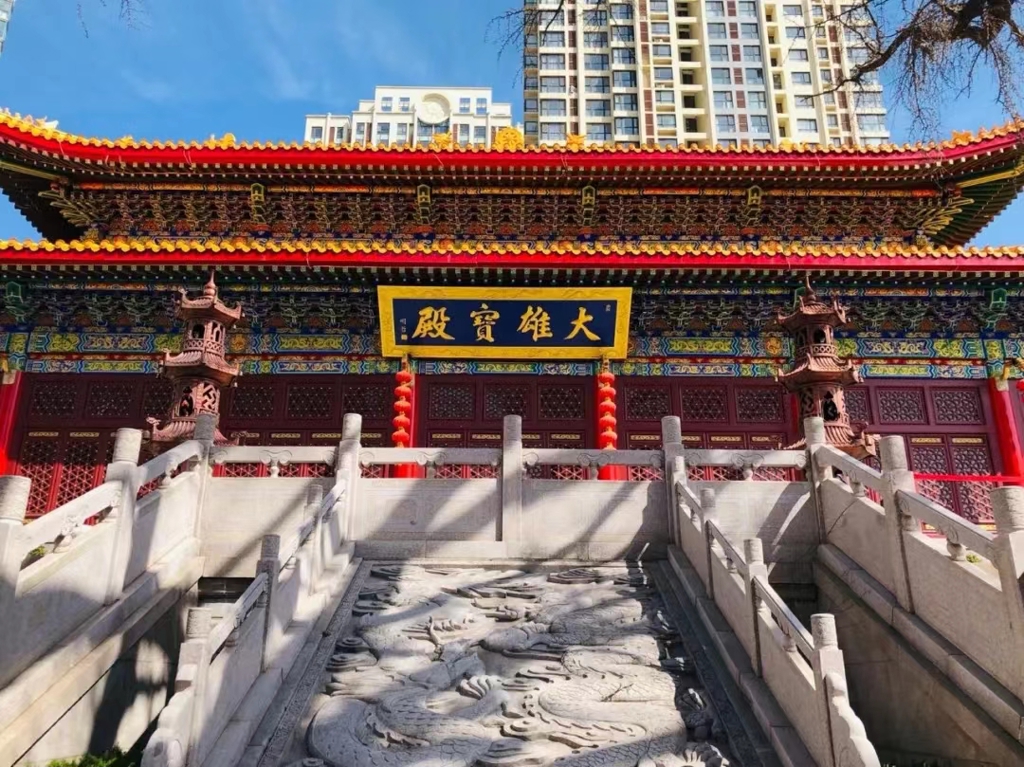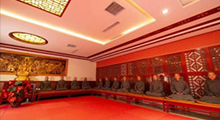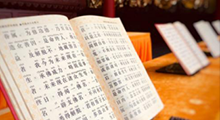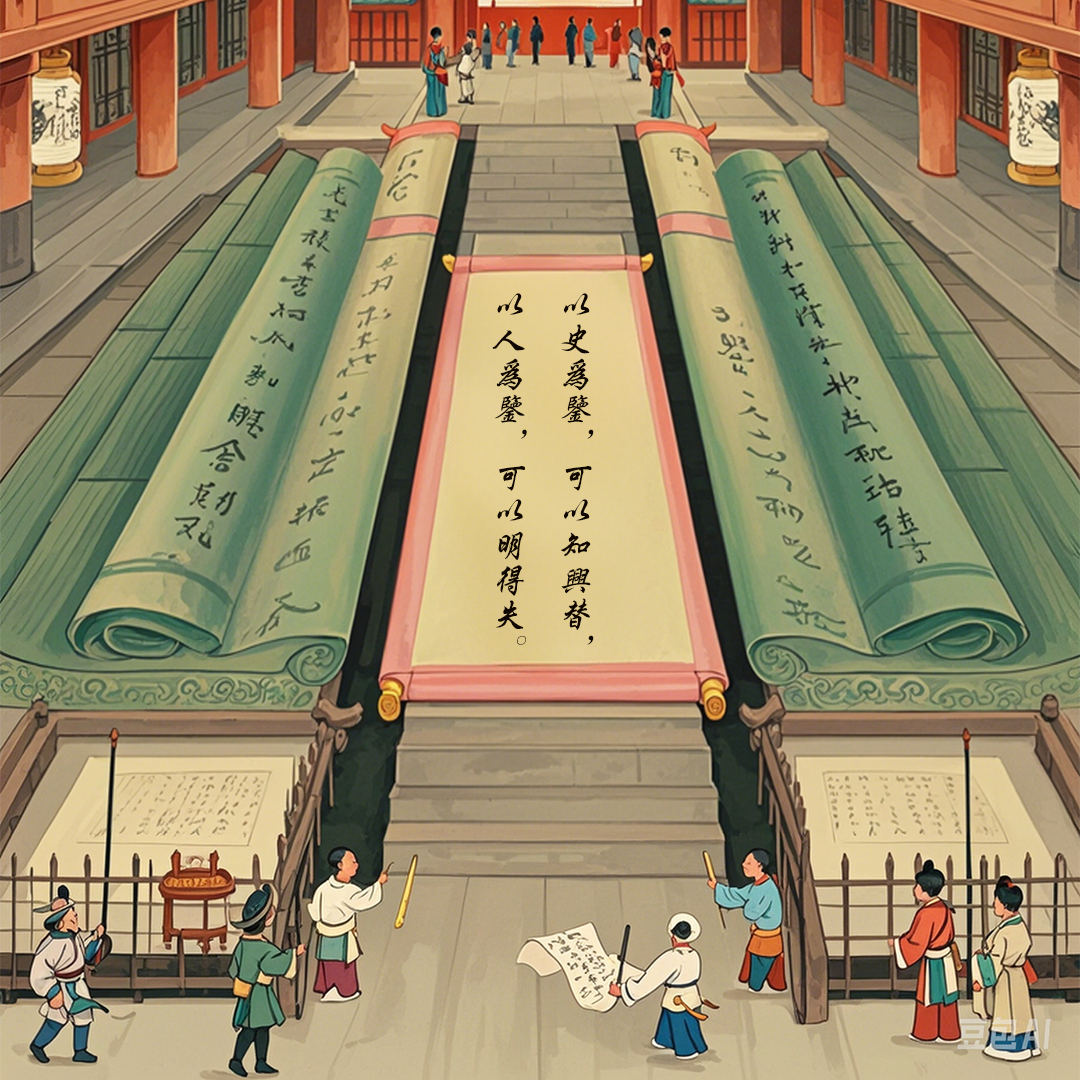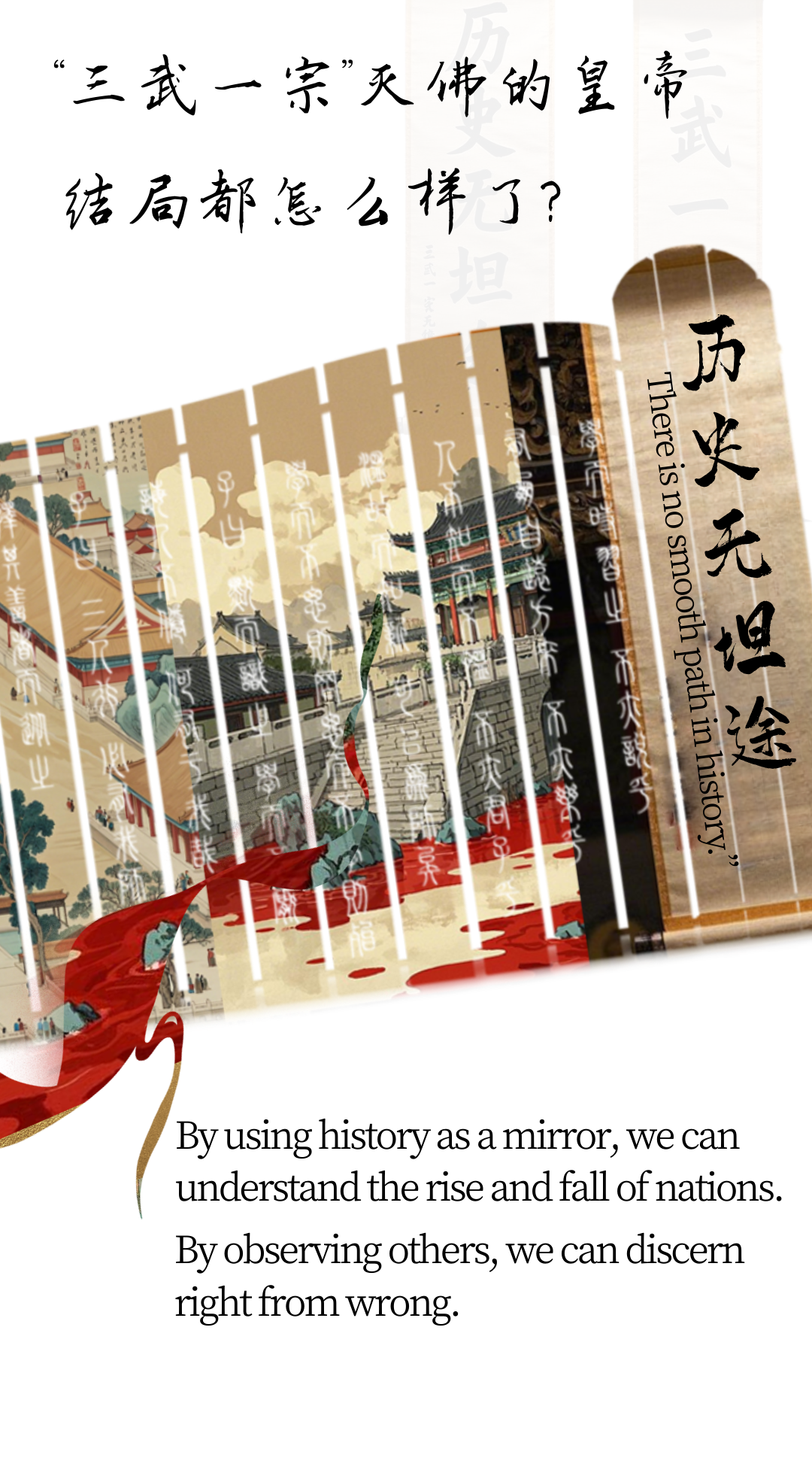



英文朗诵:普旻法师
Buddhism was introduced to China from India approximately 2000 years ago. Through centuries of trials and tribulations, it has become an integral part of Chinese traditional culture.
佛教自印度传入中国,至今约有两千年的历史了。在佛教中国化的进程中,经历了风风雨雨,而今已成为中国传统文化不可分割的一部分。
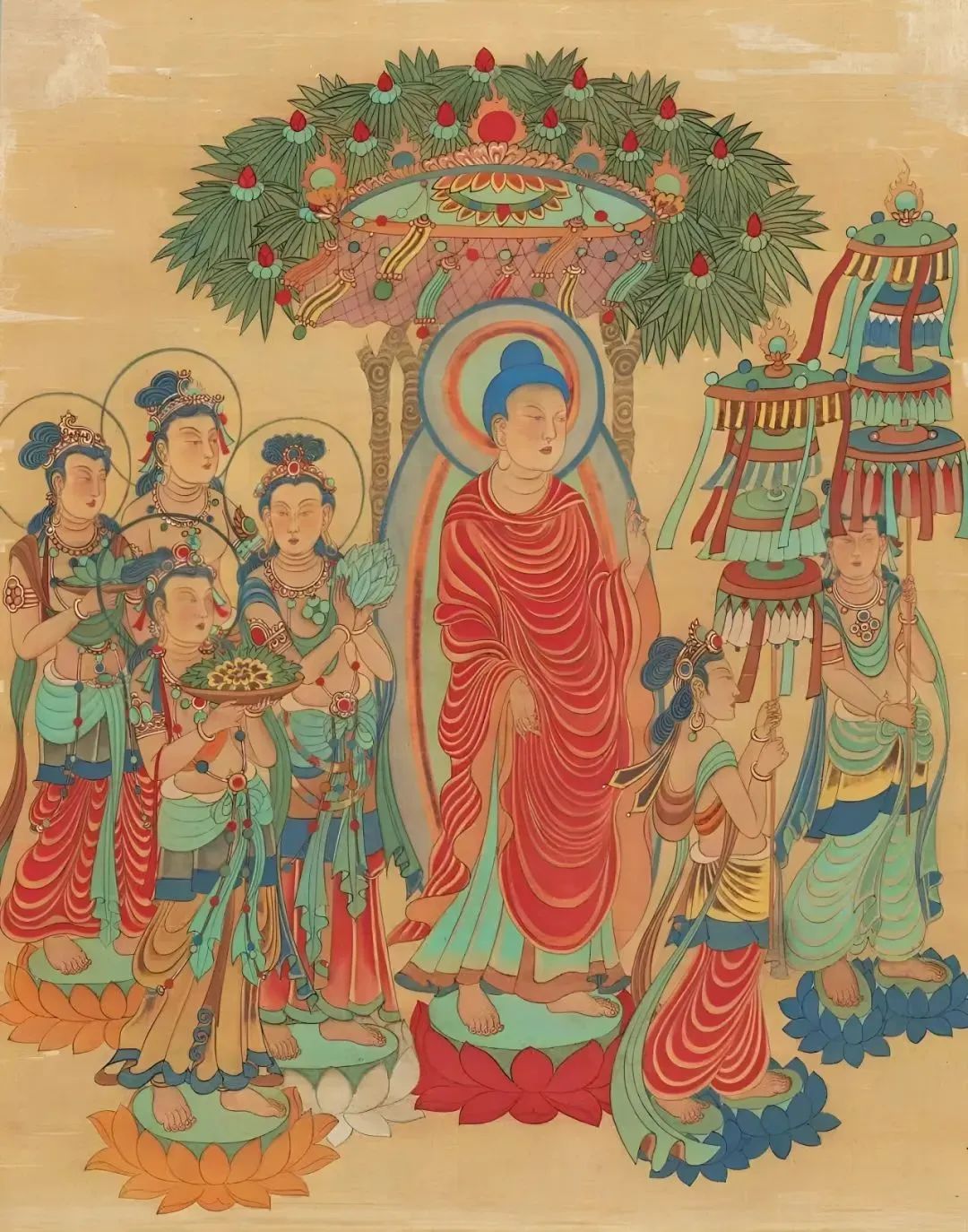
“There is no smooth path in history.” Chinese Buddhism has endured four major catastrophes, collectively known as the “Three Wu and One Zong Persecution of Buddhism”, or the “Three Wu and One Zong Suppression”. These refer to four devastating campaigns against Buddhism launched by Emperor Taiwu of Northern Wei, Emperor Wu of Northern Zhou, Emperor Wuzong of Tang, and Emperor Shizong of Later Zhou. The term “Three Wu and One Zong” derives from the posthumous or temple titles of these emperors, which contain three “Wu” characters and one “Zong” character.
“历史无坦途”,中国佛教曾经历过四次浩劫,史称“三武一宗法难”,也叫“三武一宗灭佛”,即中国历史上北魏太武帝、北周武帝、唐武宗和后周世宗四位帝王,对佛教发动的四次毁灭性打击事件。由于四位帝王的谥号或庙号带有三个“武”字和一个“宗”字,故合称为“三武一宗”。
These four persecutions inflicted profound devastation on Chinese Buddhism at the time.
这四次灭佛给当时的中国佛教造成了深重的灾难。
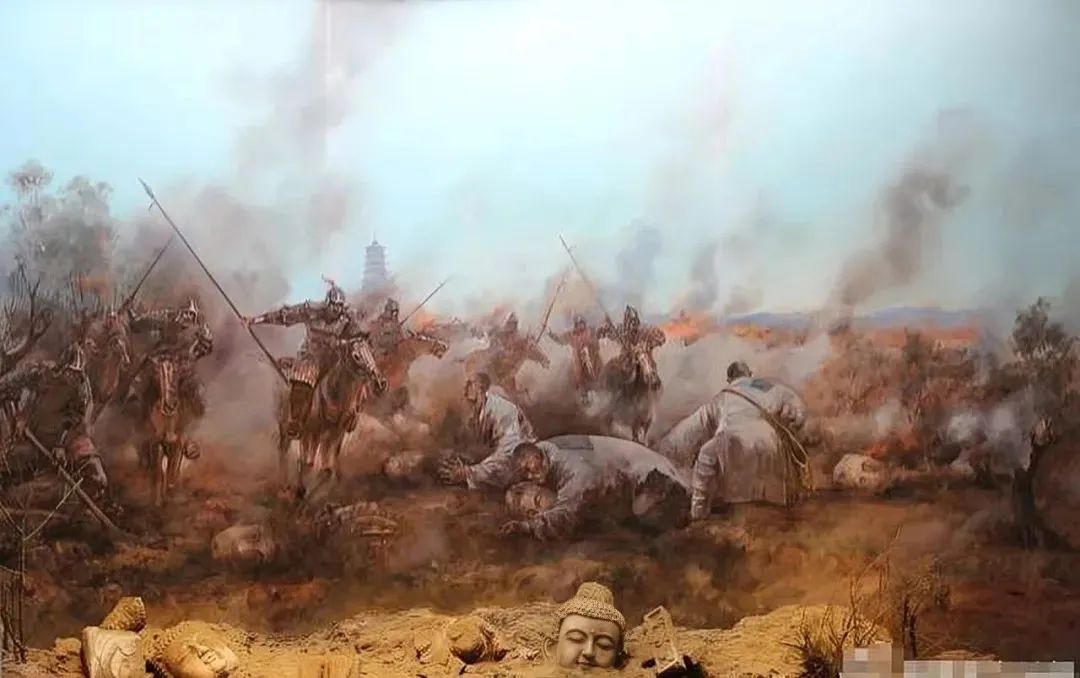
The suppression led by Emperor Taiwu of Northern Wei was the most brutal and bloody of the four. Monks were massacred, Buddhist statues were destroyed, and even those who practiced Buddhism or made Buddha statues out of clay, bronze, or other materials were executed. This campaign eradicated Buddhist clergy all around , leaving “not a single monk within the borders.”
北魏太武帝灭佛是四次灭佛事件中最为血腥残酷的,不仅坑杀僧人,毁坏佛像,而且对信仰佛教,制造泥、铜等各种佛像的人,也要屠杀,致使“一境之内,无复沙门”。

Although Emperor Wu of Northern Zhou’s persecution was less violent, it caused significant damage. Over 3,000 monasteries were destroyed, their property confiscated, scriptures and statues burned, and more than 2 million monks and nuns were forced to return to secular life.
北周武帝的灭佛虽没杀人流血,但有超过3000座寺院被毁,财产被没收,经像被焚毁,超过200万僧侣被迫还俗。
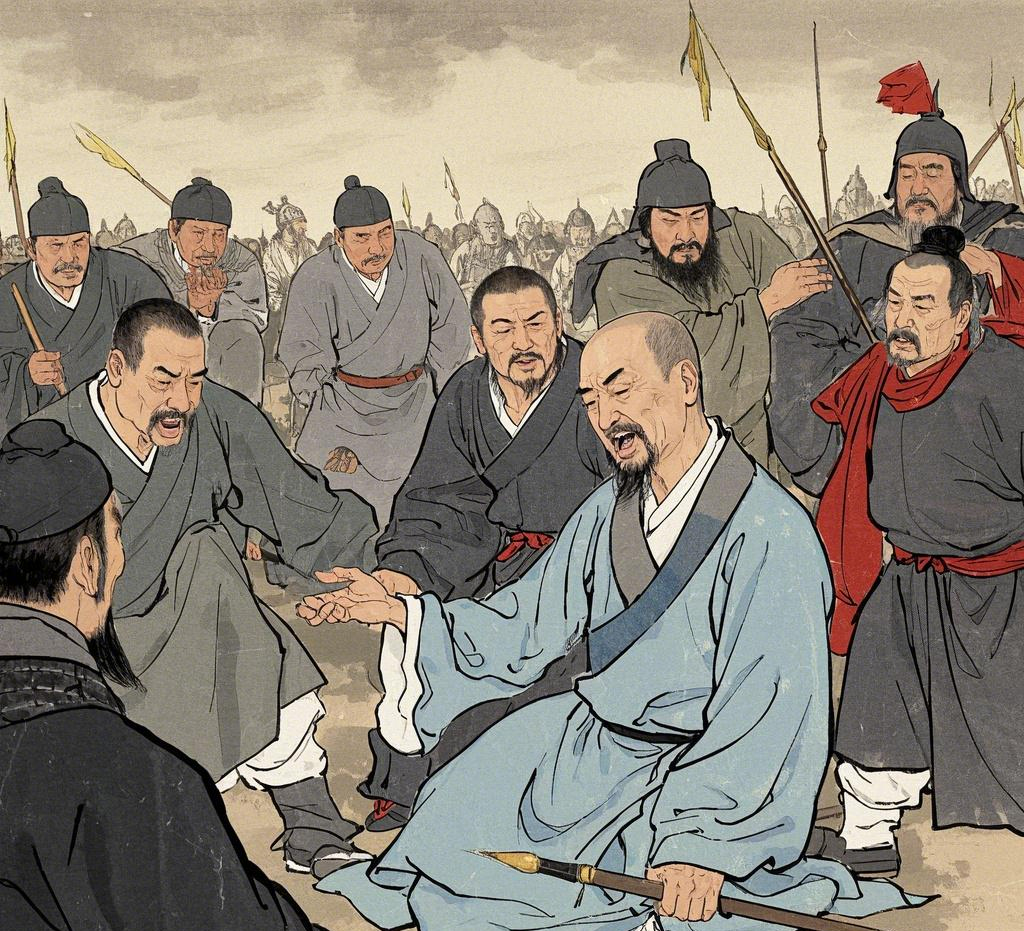
The Buddhist persecution under Emperor Wuzong of Tang dealt the heaviest blow among the four campaigns. Within just four months, over 4,600 major monasteries and more than 40,000 smaller temples were dismantled, more than 260,000 monks and nuns were defrocked and compelled to leave the monastic life, and hundreds of thousands of hectares of temple-owned land were confiscated. Countless Buddhist scriptures were destroyed, and the once-flourishing eight Schools of Chinese Buddhism, except for Chan (Zen) Buddhism, began to decline irreversibly.
唐武宗的灭佛运动,在四次灭佛运动中对佛教的打击是最沉重的。4个月时间内,共拆除大的寺院4600余所,小的寺院4万多所,还俗僧尼26万余人,没收良田数十万顷。佛教大量经典被毁,盛极一时的中华佛家八宗,除禅宗外,自此均日薄西山。
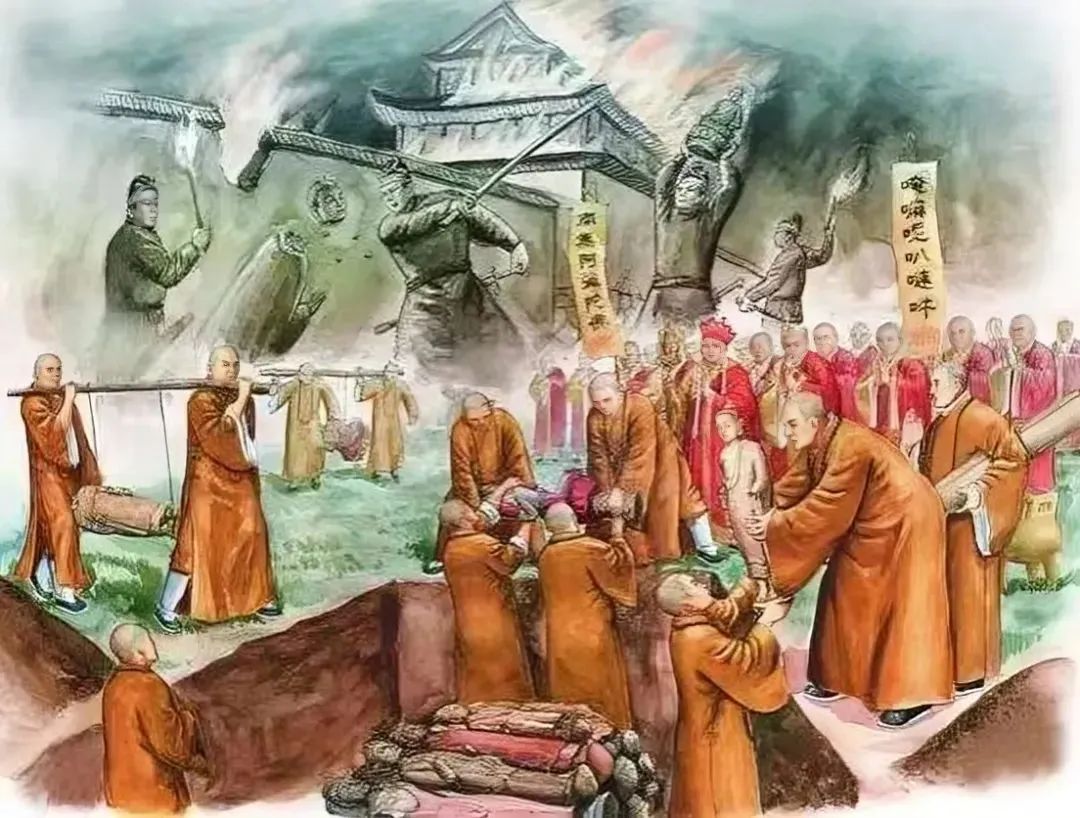
During Emperor Shizong of Later Zhou’s persecution, over 3,336 temples were demolished, and more than 60,000 monks and nuns were forced to return to secular life. This dealt a fatal blow to a Buddhist community already weakened beyond recovery, pushing it further down the path of decline.
后周世宗的灭佛运动,超过3336座佛教寺庙被毁,僧尼还俗者六万余人,使早已元气大伤、经不起折腾的佛教,无可挽回地走上了衰败之路。
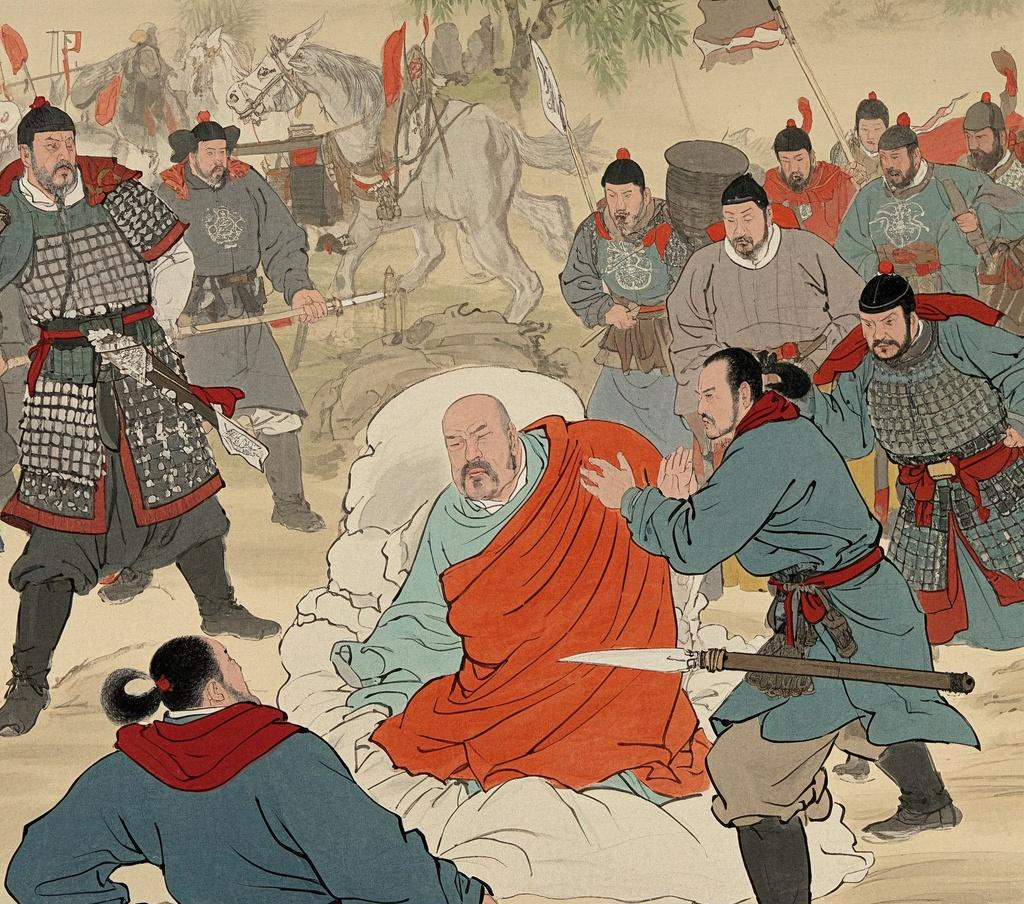

What, then were the fates of the four emperors who orchestrated the “Three Wu and One Zong” persecution of Buddhism?
那么,“三武一宗”灭佛的四位皇帝结局如何呢?
Emperor Taiwu of Northern Wei, shortly after his brutal campaign against Buddhism, was assassinated by the eunuch Zong Ai in 452 CE at the age of 44.
北魏太武帝拓跋焘灭佛后不久,于公元452年被宦官宗爱谋杀,年仅44岁。
Emperor Wu of Northern Zhou, who banned Buddhism, destroyed temples, confiscated monastic assets, burned scriptures and statues, and forced monks and nuns to return to secular life, died four years later in 578 CE. While leading a northern military campaign, he suddenly contracted a severe illness, resulting in widespread bodily decay and death at the age of 36.
北周武帝宇文邕下令禁断佛教,毁坏、没收寺院,焚毁经像,勒令僧尼还俗。四年后,公元578年,他在北伐途中,突然身患恶疾,全身糜烂而死,年仅36岁。
Emperor Wuzong of Tang, who ordered the suppression of Buddhism in 845 CE, died just a year later. Historical records suggest he, with obsession with Daoist elixirs, succumbed to poisoning caused by excessive consumption, passing away at the age of 32.
唐武宗李炎于845年下令灭佛,一年后,就暴毙而亡。据史料推测,唐武宗痴迷道教丹药,应是过量服食中毒而亡,死时年仅32岁。
In the second year of Xiande (955 CE), Emperor Shizong of Later Zhou, Chai Rong, initiated a campaign against Buddhism. Four years later, in 959 CE, while leading a military expedition against the Khitan, he suddenly fell ill and developed a festering chest wound, which ultimately claimed his life at the age of 38.
周世宗柴荣在显德二年(955年),开始了灭佛运动,四年后(约公元959年),柴荣率大兵亲征契丹,突然发病,胸生恶疮溃烂而死,年仅38岁。

Every action has its consequences. The four emperors and their key accomplices who spearheaded the suppression of Buddhism all met untimely deaths, either through assassination or sudden illness, shortly after their campaigns. Throughout history, there have been countless tragic examples of those who destroyed temples, persecuted Buddhism, or exploited religion for personal gain.
每个人都有自己的因果,发起灭佛的四位皇帝及主要参与者,都是在灭佛后暴毙或者被杀。古往今来,毁寺灭佛及挟佛敛财者下场之悲惨的例子数不胜数。
“By using history as a mirror, we can understand the rise and fall of nations; by observing others, we can discern right from wrong.” History, like a wise teacher, speaks to us in its unique way, imparting lessons written in blood and tears and offering profound insights into human actions and their consequences.
“以史为鉴,可以知兴替,以人为鉴,可以明得失。”历史像一位智者,用他独特的方式,向我们诉说,传授着血泪的教训和深邃的智慧。
文献(References):
1. Emperor Taiwu of Northern Wei (Reign: 424–452 CE)Wei Shou (The Book of Wei) · Treatise on Buddhism and Taoism states: “All Buddhist statues, images, and foreign scriptures were destroyed and burned. All monks, regardless of age, were executed.”
北魏太武帝拓跋焘(424-452年在位)
《魏书·释老志》中提到:“诸有佛图形象及胡经,尽皆击破焚烧,沙门无少长悉坑之。”
2. Emperor Wu of Northern Zhou (Reign: 560–578 CE)Book of Zhou · Annals of Emperor Wu records: “In the third year of Jiande (574 CE), an edict was issued to destroy Buddhist temples and return monks and nuns to secular life.”
Book of Zhou also notes: “Over two million monks and nuns were defrocked and returned to secular life.”
北周武帝宇文邕(560-578年在位)
《周书·武帝纪》中记载:“建德三年(574年),诏毁佛寺,僧尼还俗。”
《周书》中记载:“僧尼还俗者二百余万。”
3. Emperor Wuzong of Tang (Reign: 840–846 CE)
Old Book of Tang · Annals of Emperor Wuzong: Wuzong Ji documents: “In the fifth year of Huichang (845 CE), an imperial decree ordered the destruction of all Buddhist temples in the empire.”Old Book of Tang also records: “Over 260,000 monks and nuns were defrocked and returned to secular life.”
唐武宗李炎(840-846年在位)
《旧唐书·武宗纪》记载:“会昌五年(845年),诏天下佛寺,毁之。”
《旧唐书》中记载:“僧尼还俗者二十六万。”
4. Emperor Shizong of Later Zhou (Reign: 954–959 CE)Old History of the Five Dynasties · Annals of Emperor Shizong of Zhou: Zhou Shizong Ji states: “In the second year of Xiande (955 CE), an imperial decree was issued to demolish all Buddhist temples not officially sanctioned.”
Old History of the Five Dynasties also records: “Over 60,000 monks and nuns were defrocked and returned to secular life.”
后周世宗柴荣(954-959年在位)
《旧五代史·周世宗纪》中记载:“显德二年(955年),诏天下寺院,非敕额者悉毁之。”
《旧五代史》中记载:“僧尼还俗者六万余。”
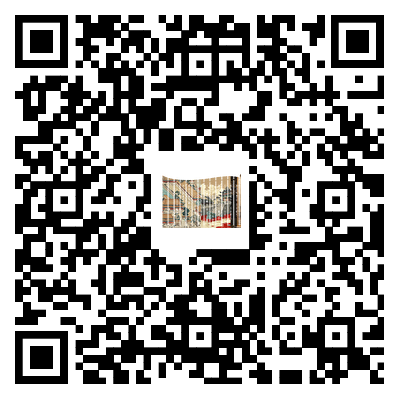
扫码阅读中文版全文
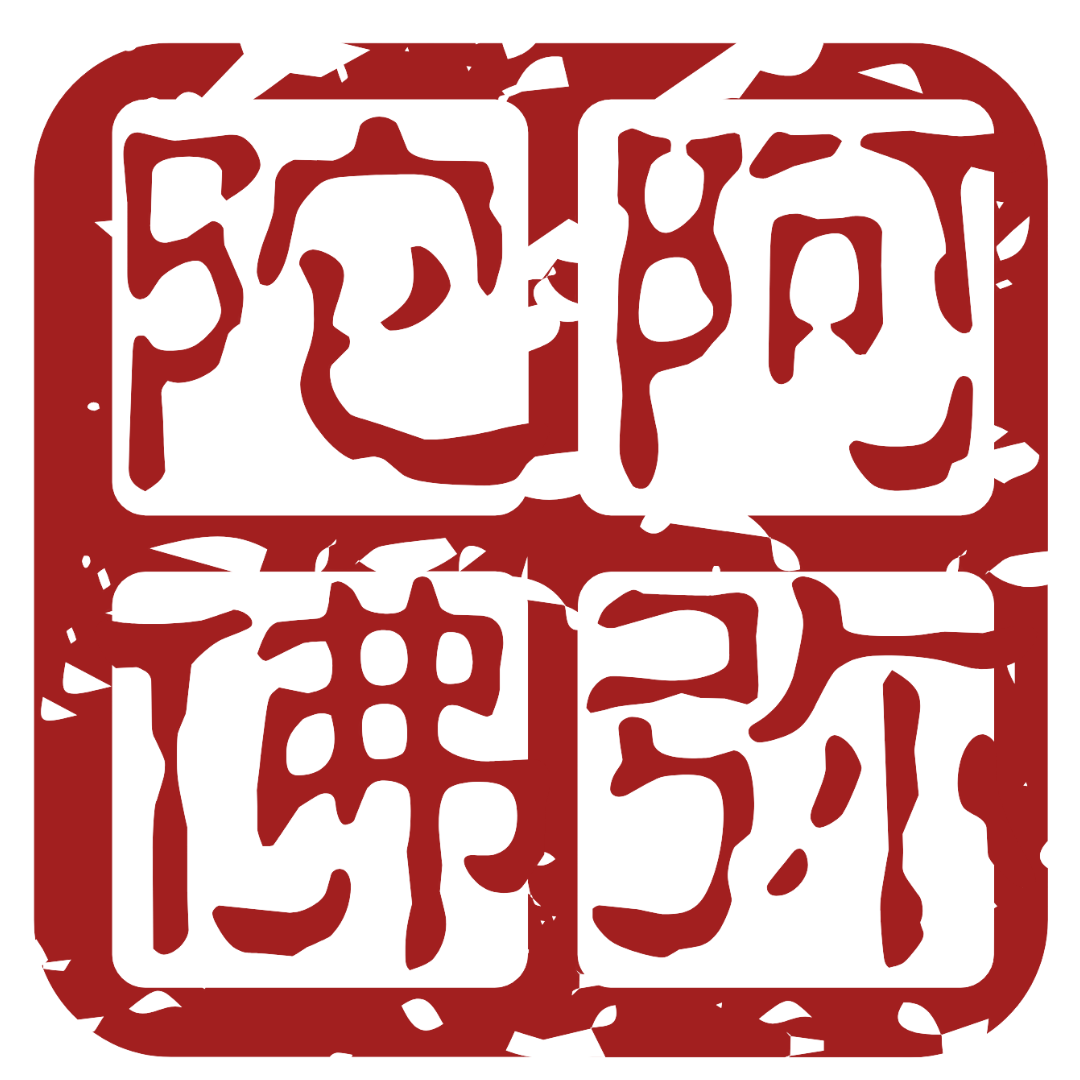
本文由「青岛观音寺」微信平台原创
转载请注明出处
公众号:qingdaoguanyinsi
